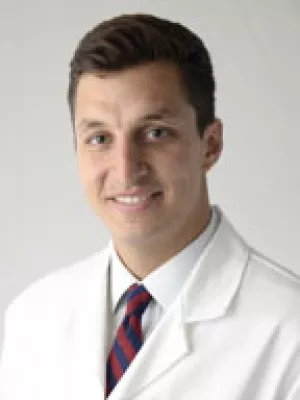Biography
Arya Zarinsefat, M.D. is an Abdominal Transplant Fellow in the UCSF Department of Surgery. He completed his General Surgery residency training at UCSF in 2022. During his research years, he worked in Sarwal Lab at UCSF and completed the Advanced Training in Clinical Research certificate program through the UCSF Department of Epidemiology and Biostatistics.
Dr. Zarinsefat obtained a Bachelor of Arts in Chemistry from Johns Hopkins University completed his medical education at the University of Michigan, where he demonstrated early commitment to research by utilizing analytic morphometrics to predict perioperative outcomes. He excelled academically and clinically, and was selected to the Alpha Omega Alpha honor society. He continued to excel at UCSF during his general surgery residency. Dr. Zarinsefat was co-mentored by Dr. Minnie Sarwal (expertise with next-generation sequencing and bioinformatics) and Dr. Peter Stock (transplant surgery in HIV positive recipients) during his research years. Dr. Stock has tapped him to establish a university-wide database of all HIV-infected transplant recipients, and to follow their long term outcomes.
Education
| Institution | Degree | Dept or School | End Date |
|---|---|---|---|
| University of Michigan | M.D. | Doctor of Medicine | 05/2015 |
| Johns Hopkins University | B.A. | Chemistry | 05/2010 |
Awards & Honors
| Award | Conferred By | Date |
|---|---|---|
| UCSF-Gladstone Center For AIDS Research (CFAR) Mentored Scientist Award | UCSF | 2019/2020 |
| "Filling a Void of Research Training for Transplant Surgeons” (FAVOR) T32 Training Grant | NIH | 2018/2020 |
Clinical Interests
General Surgery
Transplant Surgery
Zarinsefat A, Terjimanian MN, Tishberg LM, Stein IC, Mazurek AA, Wang SC, Sonnenday CJ, Englesbe MJ. Perioperative ChangesIn Trunk Musculature. Oral Presentation presented at: Academic Surgical Congress, 8th Annual Meeting; 2013; New Orleans, LA.
Zarinsefat A, Kim EK, Bonn J, DeRoo S, Lee C, Stein I, Campbell DA, Englesbe MJ. The Role of Bowel Preparation In Improving Surgical Outcomes in Elective Colectomy. Oral Presentation presented at: Academic Surgical Congress, 8th Annual Meeting; 2013; New Orleans, LA.
Zarinsefat A, Syed SM, Hirose R. Initial results from the pilot Transplant Quality Improvement Project (TransQIP). Poster presented at: ASTS Winter Symposium; January 2019; Miami, FL
Zarinsefat A, Braun HJ, Syed SM, Orandi BJ, Roll GR. Do high-risk categories convey the wrong message to waitlisted patients – is it time to reconsider the absolute risk of graft loss?Poster presented at: American Transplant Congress; June 2018; Seattle, WA
In the News
Research Interests
Organ Transplantation in HIV-infected recipients
Microbiome in Transplantatio
Publications
- An Enhanced Role of Innate Immunity in the Immune Response After Kidney Transplant in People Living With HIV: A Transcriptomic Analysis.| | PubMed
- 313.4: The tissue common response module (tCRM) score predicts treatment response for acute cellular rejection following pancreas transplant.| | UCSF Research Profile
- 234.10: Using a Unique Repository of Pancreas Transplant Biopsies To Validate the Tissue Common Response Module (tCRM) Score as a Tool to Assess the Severity of Pancreas Transplant Rejection.| | UCSF Research Profile
- 411.2: Rejection After Liver Transplantation: What Can We Learn From Transcriptomic Analysis?.| | UCSF Research Profile
- Considerations For Use of Propensity Score Matching in Specific Patient Populations-Reply.| | PubMed
- Consent to organ offers from public health service "Increased Risk" donors decreases time to transplant and waitlist mortality.| | PubMed
- Long-term Outcomes Following Kidney and Liver Transplant in Recipients With HIV.| | PubMed
- Use of the Tissue Common Rejection Module Score in Kidney Transplant as an Objective Measure of Allograft Inflammation.| | PubMed
- Single-Cell RNA Sequencing of Tocilizumab-Treated Peripheral Blood Mononuclear Cells as an in vitro Model of Inflammation.| | PubMed
- Single-cell RNA sequencing of Tocilizumab-treated peripheral blood mononuclear cells as an in vitro model of inflammation.| | PubMed

